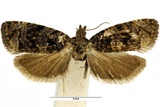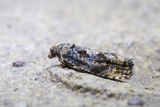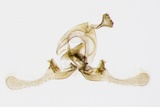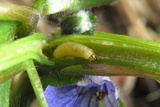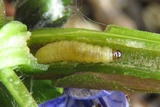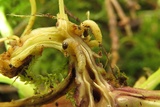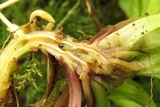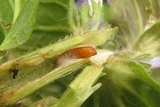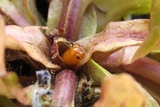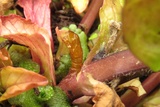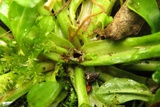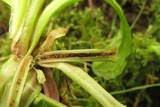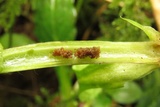Endothenia ustulana (Haworth, 1811) Species
Last modified: Nov. 23, 2025, 12:40 p.m.
A very rare species in Belgium.
Details
- Classification
- Family: Tortricidae > Subfamily: Olethreutinae > Tribus: Endotheniini > Genus: Endothenia > Species: Endothenia ustulana
- Vernacular names
- Zenegroenbladroller (NL), Bugle Marble (EN), Günselwickler (DE)
- Synonyms
- Endothenia fuligana sensu auct.
- First mention in Belgium
- De Fré Ch. 1858. Catalogue des Microlépidoptères de la Belgique. — Annales de la Société entomologique belge 2: 45–162. On page 82 (as fuligana). view page
- Status
-
Native
Distribution
Bionomics
The larva lives from summer onwards in the rootstock. After hibernation, it bores into a flowering stem. This often causes wilting of the top or retarded growth. Some parts of the stem or rootstock are filled with brown frass. Plants growing in the shade seem to be preferred and even there density seems low.
The larva prepares an exit hole. Pupation in the larval habitat within a flimsy, white cocoon. The pupa protrudes the exit hole before emerging.
Feeding signs can be confused with those of Cnephasia spp. as they may also cause wilted tops on this host plant. Larvae of those species however live on the outside of the stem between the flowers.
The adults are active in the afternoon sunshine and later come to light.
Flight periods
The adults have been seen from May towards September.
Observed on
- Host plant (species):
- Ajuga reptans
The larva lives on Ajuga reptans, also garden cultivars.
Habitat
Damp areas and forests where the host plant occurs. Also in gardens and parks.
